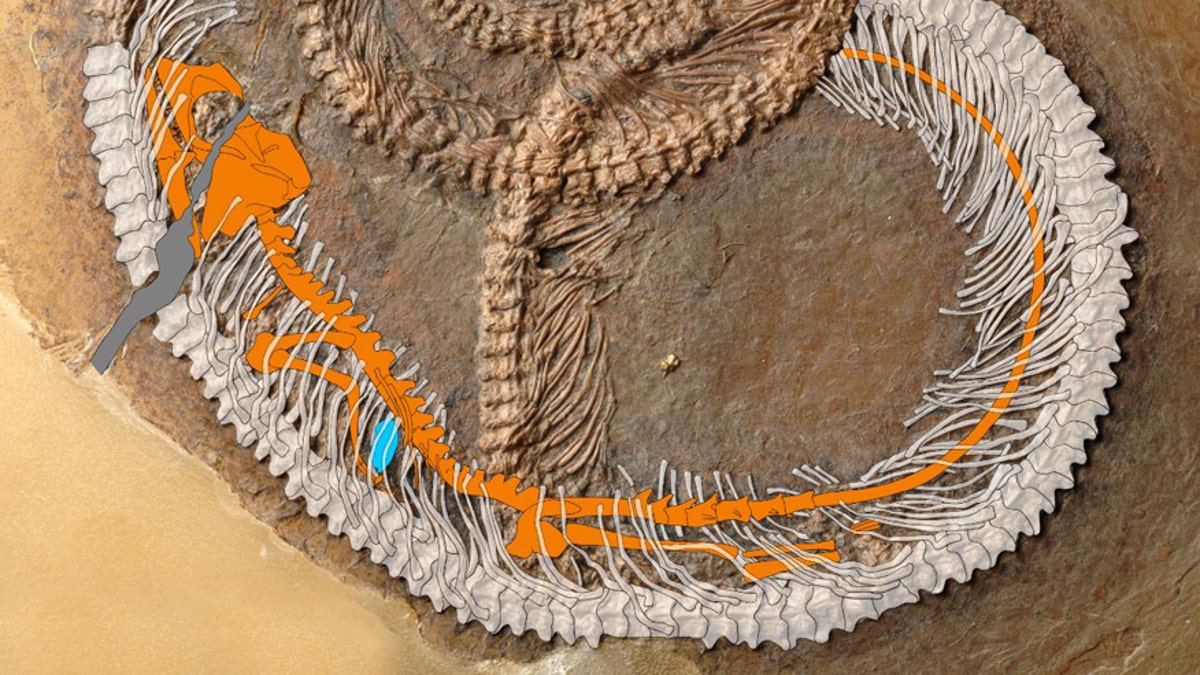
(Springer Heidelberg)
The circle of life has been captured in a unique 48-million-year-old fossil.
Sometime in the very distant past, this is what presumably happened: A lizard ate an unlucky beetle, and then a roughly 41-inch snake gobbled down that unfortunate lizard. Then the snake, a Palaeophython fischeri, also met its end, and was fossilized. It was probably just a juvenile.
Like Russian nesting dolls, the resulting fossil shows a three-part sequence— a beetle inside a lizard inside a snake.

The lizard is shown in orange, and the insect in blue. (Krister Smith)
The rare find originated from the Messel Pit Fossil Site in Germany, a UNESCO World Heritage Site.
"In the year 2009, we were able to recover a plate from the pit that shows an almost fully preserved snake," Krister Smith, of the Senckenberg Research Institute and Nature Museum Frankfurt, said in a statement. "And as if this was not enough, we discovered a fossilized lizard inside the snake, which in turn contained a fossilized beetle in its innards!"
Related:
There are other fossils similar that show what a deceased animal had in its stomach— for example, scientists have found leaves and grapes in the stomach of fossilized horses at Messel, according to the snake/lizard/beetle study, which was published in the journal Palaeobiodiversity and Palaeoenvironments in August. But there is only one other three-part fossil like this one, and it’s an ancient shark.
The lizard, for its part, was a Geiseltaliellus maarius, which was the type that could disconnect its tail, although in this case it didn’t do so.
"Since the stomach contents are digested relatively fast and the lizard shows an excellent level of preservation,” Smith added, in the statement, “we assume that the snake died no more than one to two days after consuming its prey and then sank to the bottom of the Messel Lake, where it was preserved.”
Follow Rob Verger on Twitter: @robverger
